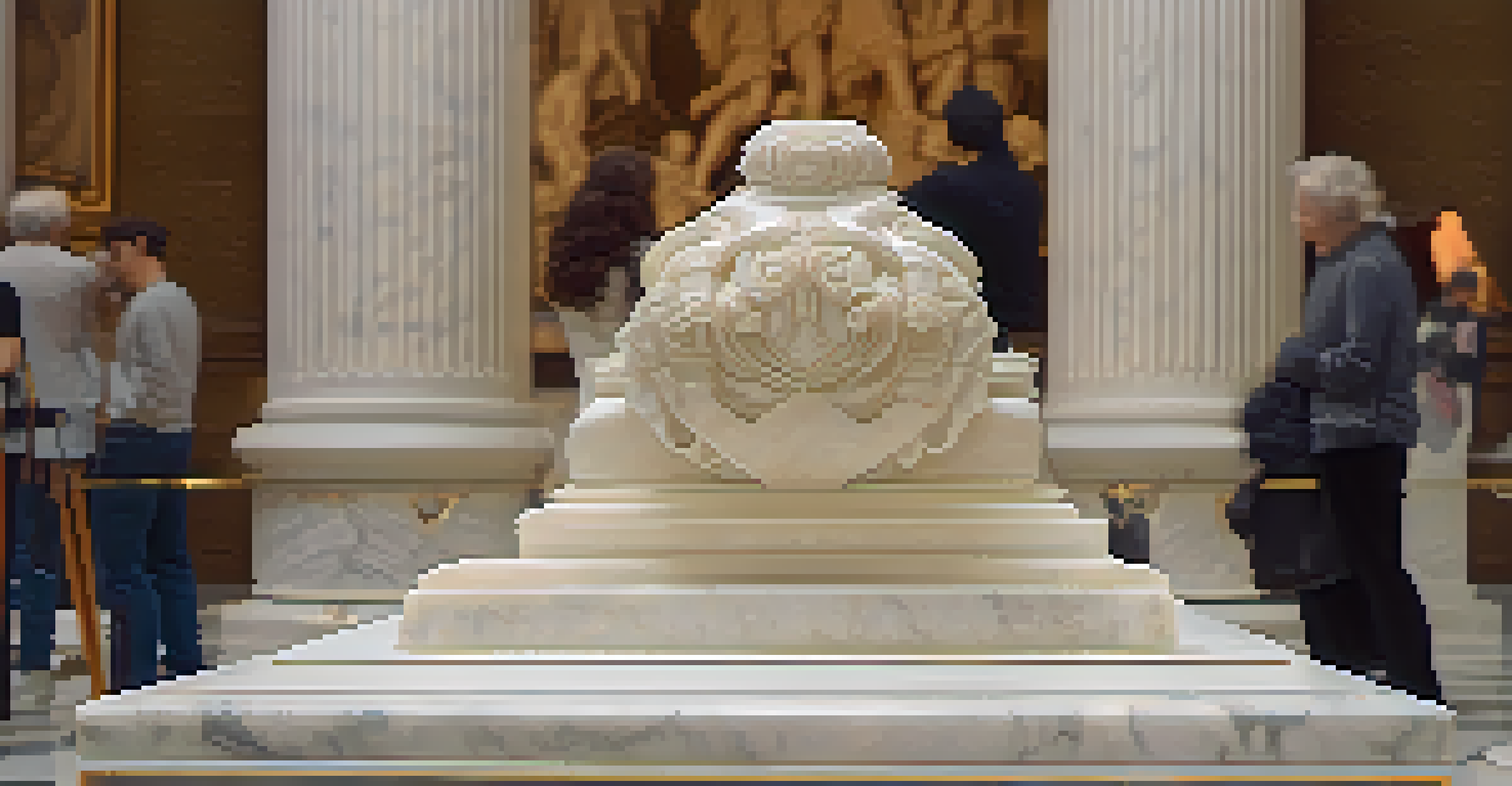Art Theft and Ethics: The Moral Consequences of Stolen Works

Defining Art Theft: What It Means in Today's World
Art theft refers to the illegal removal of artwork from its rightful owner or location. This can involve everything from high-profile heists in museums to the illicit trade of stolen pieces. The implications extend beyond mere ownership; they touch on cultural heritage and historical significance.
Art is the most beautiful of all lies; it reveals the truth behind the illusions.
In today's interconnected world, art theft has become more sophisticated, often involving organized crime. This has made it increasingly difficult for authorities to track stolen works. The sheer scale of the problem raises critical questions about accountability and the value we place on art.
As we delve into the ethics of art theft, it's essential to consider the perspectives of various stakeholders. Artists, collectors, museums, and the public all have vested interests that complicate the conversation. Understanding these viewpoints lays the groundwork for a deeper discussion on moral consequences.
The Cultural Impact of Stolen Artworks
Art is not just a collection of objects; it embodies cultural narratives and historical contexts. When a piece of art is stolen, it removes an important part of a community's identity. This loss can resonate deeply, affecting local heritage and collective memory.

For instance, the theft of Indigenous art can strip communities of their cultural expression and history. This not only impacts the artists but also future generations who may not have access to their heritage. The ripple effects of such losses can be felt across entire societies.
Art Theft Affects Cultural Identity
The theft of artworks removes vital pieces of a community's cultural heritage, impacting collective memory and identity.
In this sense, art theft transcends individual loss and becomes a societal issue. It raises the question of who has the right to claim ownership over cultural artifacts. Such considerations highlight the ethical dilemmas that arise when discussing the morality of stolen works.
Legal Framework: How the Law Addresses Art Theft
The legal landscape surrounding art theft is complex, often involving international laws and treaties. Different countries have varying regulations regarding ownership and repatriation of stolen art. This disparity can create challenges in recovering stolen works.
The theft of art is not merely a crime against property; it is a crime against culture and identity.
For example, the 1970 UNESCO Convention is a key international agreement aimed at preventing the illicit trade of cultural property. However, its enforcement can be inconsistent, leading to loopholes that thieves exploit. This raises ethical concerns about the effectiveness of our legal systems in protecting cultural heritage.
Additionally, the question of provenance—tracking the ownership history of an artwork—becomes crucial in legal disputes. Without clear provenance, stolen art can slip through the cracks of the law. This complexity underscores the importance of ethical considerations in legal discussions about art theft.
The Emotional Toll of Art Theft on Artists
For artists, the theft of their work can be deeply personal and emotionally devastating. Each piece of art carries the artist's intent, emotions, and hard work. Losing it can feel like losing a part of themselves.
Many artists report feelings of violation and helplessness when their creations are stolen. This emotional toll can impact their future work and creativity, leading to a sense of distrust in the art community. The psychological effects of art theft are often overlooked but are vitally important.
Legal Challenges in Art Recovery
The complex legal landscape and varying international laws hinder the recovery of stolen artworks and raise ethical concerns.
Moreover, the theft of an artist's work can tarnish their legacy. If stolen pieces are sold or displayed without proper attribution, it can distort the public's understanding of their contributions. This raises ethical questions about how society values and respects the work of artists.
The Role of Museums in Art Theft Ethics
Museums play a crucial role in the discussion of art theft ethics. As custodians of cultural heritage, they have a responsibility to ensure that their collections are ethically sourced. This includes actively working to return stolen items to their rightful owners.
However, many museums have faced criticism for possessing artworks with questionable provenance. These controversies highlight the ethical dilemmas museums face in balancing public interest with moral responsibility. The challenge lies in how to address past wrongs while serving the community today.
In recent years, some museums have begun to implement policies aimed at transparency and ethical acquisition. This shift reflects a growing awareness of the moral implications of their collections. By taking proactive steps, museums can lead the way in promoting ethical standards in the art world.
The Economic Consequences of Art Theft
Art theft has significant economic ramifications, impacting not just the owners but also the broader art market. Stolen art can disrupt sales and valuations, leading to a loss of trust among collectors and investors. This erosion of confidence can create a ripple effect throughout the industry.
Moreover, the financial strain on victims of art theft can be considerable. Recovering stolen works often involves legal fees, insurance claims, and loss of income from potential sales. This economic burden can be particularly challenging for independent artists and small galleries.
Emotional Impact on Artists
Art theft is emotionally devastating for artists, as it not only represents a loss of their work but also affects their legacy and creativity.
On a larger scale, art theft contributes to the illicit art trade, which is a multi-billion dollar industry. This underground market not only fuels criminal activity but also undermines the legitimacy of the art world. Understanding the economic consequences is essential to grasping the full scope of art theft's impact.
Future Directions: Addressing Art Theft Ethically
As we look to the future, addressing art theft ethically requires collaboration among various stakeholders. Artists, collectors, museums, and governments must work together to create a more transparent and accountable art market. This collective effort can help combat the prevalence of art theft.
Educational initiatives can also play a pivotal role in raising awareness about the moral implications of art theft. By informing the public about the significance of provenance and ethical sourcing, we can foster a culture of respect for artists and their work. This could ultimately lead to a more conscientious art community.

Additionally, technological advancements, such as blockchain and digital tracking, offer promising solutions for provenance verification. By embracing these tools, the art world can create a more secure environment that discourages theft. The future of art theft ethics hinges on our ability to innovate and adapt to new challenges.